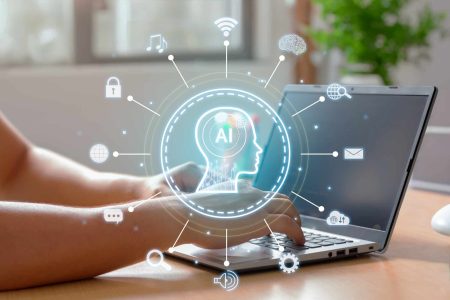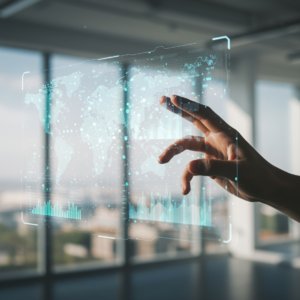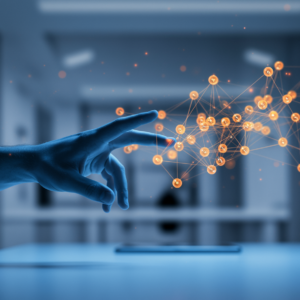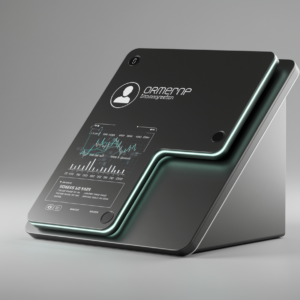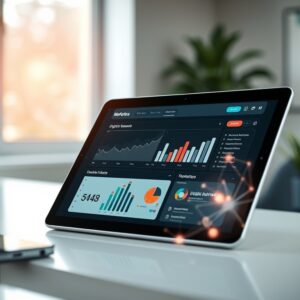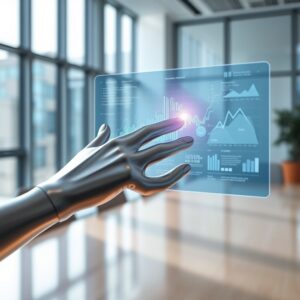In the ever-evolving landscape of artificial intelligence, harnessing multi-agent systems offers transformative potential for various industries. These systems, composed of interacting intelligent agents, are pivotal in developing complex, adaptive, and decentralized AI applications. By delving into essential components and understanding their unique functions, we can appreciate how these systems contribute to driving innovation. Exploring the diverse applications of multi-agent systems in AI reveals their ability to tackle a wide array of problems, from logistics optimization to autonomous vehicle coordination. Despite their numerous benefits, implementing these systems comes with its own set of challenges, requiring careful consideration and robust strategies. Analyzing successful case studies provides valuable insights into overcoming these obstacles and maximizing the impact of multi-agent systems. Additionally, the right tools and technologies play a critical role in the development process, allowing for more efficient and scalable solutions. As the field continues to advance, staying abreast of future trends ensures that we remain at the cutting edge of innovation. This blog post will guide readers through these key aspects, ultimately offering a comprehensive overview of the significant advancements and potential of multi-agent systems in artificial intelligence.
Content
Understanding Multi-Agent Systems
Definition and Core Concept
Multi-agent systems (MAS) refer to a collective of autonomous agents interacting within a shared environment to achieve individual or collective goals. Each agent operates independently, following certain rules or algorithms, yet collectively they work towards a common objective, often leading to emergent behavior. These systems draw inspiration from natural phenomena, such as ant colonies or human social structures, where decentralized actions result in coordinated outcomes. Understanding the core concept of these systems lays the foundation for appreciating their applications and potential in artificial intelligence, highlighting their capacity to solve complex, dynamic problems more efficiently than centralized approaches.
Historical Development
The concept of multi-agent systems emerged in the 1980s within the fields of distributed artificial intelligence (DAI) and robotics. Early research focused on creating algorithms that allowed simple agents to perform tasks cooperatively. Over the years, advancements in computational power and algorithm design have propelled MAS research forward, enabling more sophisticated and scalable systems. Historical milestones include the development of communication protocols, coordination strategies, and the introduction of machine learning techniques to enhance agent behavior. This evolution has expanded the application of MAS across various sectors, including automation, telecommunications, and transportation, underscoring their growing importance in modern AI developments.
Key Characteristics
Multi-agent systems are characterized by decentralization, heterogeneity, and adaptability. Decentralization means that no single agent has global control, promoting robustness and fault tolerance within the system. Heterogeneity refers to the diversity of agents, which may possess different capabilities, knowledge bases, or roles, enhancing the system’s overall functionality. Adaptability is a crucial characteristic, allowing agents to adjust their behaviors in response to environmental changes or internal states. These key features enable MAS to address complex, real-world problems by leveraging collective problem-solving and dynamic interactions, making them a powerful tool in the field of artificial intelligence.
Key Components of Multi-Agent Systems
Agents are the fundamental building blocks of multi-agent systems. Each agent operates autonomously based on pre-defined rules or learned behaviors, and can perceive its environment, make decisions, and take actions to achieve specific objectives. These agents can range from simple, reactive entities to sophisticated, goal-driven systems capable of complex decision-making processes. Their autonomy and ability to interact with other agents and their environment enable the MAS to handle tasks more flexibly and dynamically. The design of these agents, including their decision-making logic and interaction strategies, is crucial in determining the overall system’s effectiveness and efficiency.
Communication among agents is another critical component essential for coordination and cooperation within a multi-agent system. Agents use communication protocols to share information, negotiate tasks, and synchronize their actions. Effective communication ensures that agents can work together towards common goals, resolve conflicts, and share knowledge to improve their individual and collective performance. Various communication strategies, such as direct messaging, broadcast, and stigmergy (indirect communication through environmental changes), can be employed depending on the system’s requirements and the complexity of the tasks. Ensuring robust and efficient communication mechanisms is pivotal for the smooth operation of the MAS.
Coordination mechanisms are the frameworks that enable agents to work together harmoniously. These mechanisms can include predefined strategies, negotiation protocols, and distributed planning algorithms that ensure agents’ actions are aligned and synergistic. Coordination is vital for preventing conflicts and redundancies while maximizing the overall system performance. For example, task allocation algorithms ensure that each agent takes on tasks best suited to its capabilities, while consensus algorithms help agents agree on shared decisions. Advanced coordination techniques also involve learning and adaptation, allowing agents to refine their behaviors based on experiences and environmental feedback, thereby enhancing the MAS’s ability to handle complex and dynamic problems.
Applications of Multi-Agent Systems in AI
Autonomous Vehicles and Transportation
Multi-agent systems play a crucial role in the development of autonomous vehicles and intelligent transportation systems. In this context, each autonomous vehicle can be viewed as an agent that must navigate, make decisions, and interact with other vehicles and infrastructure units. MAS facilitate cooperative driving behaviors, such as platooning, where groups of vehicles travel together, optimizing fuel efficiency and road usage. Additionally, these systems enable dynamic traffic management by allowing vehicles to communicate and adapt to changing traffic conditions in real-time, reducing congestion and enhancing safety. By leveraging the decentralized and adaptive nature of MAS, the transportation sector can achieve more efficient, safe, and sustainable operations.
Robotics and Industrial Automation
In industrial settings, multi-agent systems enhance the flexibility, efficiency, and coordination of robotic systems. Each robot acts as an autonomous agent capable of collaborating with other robots to perform complex manufacturing tasks. This approach allows for adaptable and scalable production lines that can respond swiftly to changes in product design or demand. MAS also facilitate fault tolerance, as the failure of a single robot does not disrupt the entire system’s functionality. By integrating MAS, factories can achieve higher levels of automation, precision, and efficiency, as robots coordinate to complete tasks ranging from assembly to quality inspection, ultimately driving innovations in smart manufacturing and Industry 4.0 paradigms.
Smart Grids and Energy Management
In the energy sector, multi-agent systems offer significant advancements in smart grid management and renewable energy integration. Agents represent various components, such as power generators, storage systems, and consumers, each making autonomous decisions and communicating to optimize grid performance. The decentralized nature of MAS allows for real-time load balancing, efficient energy distribution, and rapid response to demand fluctuations. Additionally, these systems enhance the integration of renewable energy sources by dynamically adjusting to their variable outputs, thereby maximizing their utilization. Through MAS, the energy grid can achieve higher efficiency, reliability, and sustainability, leading to more resilient and adaptive energy management solutions.
Transform your business with custom AI solutions from a leading Artificial Intelligence Agency.
How Multi-Agent Systems Drive Innovation
Multi-agent systems drive innovation by facilitating decentralized problem-solving, allowing for more robust and resilient solutions. In traditional centralized systems, a single point of failure can disrupt operations significantly. However, in MAS, the autonomous nature of each agent means the system can continue functioning effectively even if individual agents fail. This decentralized approach not only enhances system reliability but also enables real-time, flexible responses to changing conditions. By distributing computational tasks across multiple agents, MAS can tackle complex problems more efficiently, opening up new possibilities for innovation in fields such as robotics, logistics, and network management.
Another way multi-agent systems spur innovation is through their ability to simulate and manage complex scenarios that would be challenging for centralized systems. For instance, in disaster response situations, MAS can model and coordinate the activities of various emergency units, optimizing resource allocation and response times. This capability to handle complexity makes MAS invaluable for applications requiring high levels of coordination and adaptability. By employing machine learning techniques, agents can also learn from their experiences, improving their performance over time. This adaptive learning aspect is crucial for developing intelligent systems that can evolve and innovate based on real-world feedback.
Moreover, multi-agent systems enable new forms of collaboration and interaction among diverse and distributed entities. In supply chain management, for example, each entity, from suppliers to distributors to retailers, can be modeled as an autonomous agent. These agents can negotiate, share information, and make decisions in real-time, leading to more efficient and responsive supply chains. Such collaboration reduces bottlenecks and improves overall efficiency, offering a competitive edge in rapidly changing markets. By fostering innovation in operational strategies and processes, MAS enhance the ability of businesses and organizations to adapt, innovate, and thrive in a dynamic environment.
Experience effortless, cost-effective social media management with AI technologies
Benefits of Multi-Agent Systems
Scalability
One of the most significant benefits of multi-agent systems is their inherent scalability. As systems grow and tasks become more complex, adding more agents can enhance performance without a linear increase in complexity. Each new agent can operate autonomously, integrating smoothly into the existing system and contributing to the overall task without overwhelming the system’s communication or coordination mechanisms. This makes MAS particularly suitable for applications that need to scale up or down quickly in response to changing demands. Scalability ensures that businesses can rapidly adapt to market conditions, expanding or contracting their operational capabilities without extensive reconfigurations or performance bottlenecks.
Flexibility and Adaptability
Multi-agent systems offer exceptional flexibility and adaptability, making them ideal for dynamic and unpredictable environments. Each agent’s ability to operate independently and respond to local conditions allows the system to adjust its strategies in real-time. This adaptability is crucial for applications such as autonomous drones, where agents must navigate varying terrain, weather conditions, and unforeseen obstacles. By utilizing MAS, systems can reconfigure themselves in response to new information, optimize their performance, and maintain functionality even when faced with unexpected challenges. This flexibility reduces downtime and improves efficiency, enabling continuous operation in varying conditions and promoting long-term sustainability.
Enhanced Robustness
Enhanced robustness is a key benefit of multi-agent systems, mitigating the risks associated with single points of failure. In MAS, the decentralized and distributed nature ensures that the failure of one or more agents does not incapacitate the entire system. This resilience is particularly valuable in critical applications such as disaster response, where continuous operation is vital. Agents can automatically reassign tasks and adapt their behavior to compensate for any lost functionality, maintaining overall system performance. Robustness extends the lifecycle of the system, reduces maintenance costs, and enhances reliability, making MAS an attractive option for high-stakes environments where uninterrupted operation is essential.
Challenges in Implementing Multi-Agent Systems
One of the primary challenges in implementing multi-agent systems is ensuring effective communication among agents. While the decentralized nature of MAS provides numerous advantages, it also complicates the communication protocols needed for coordination and collaboration. Agents must be able to exchange information accurately and efficiently, often in real-time, to achieve their goals. Developing robust communication protocols that can handle variable bandwidth, latency, and potential disruptions is a complex task. Miscommunications or delays can lead to suboptimal performance, inconsistencies, or even system failures, making reliable communication a critical concern in MAS design and implementation.
Another significant challenge is the development of coordination mechanisms that align the actions of autonomous agents toward a common objective. Coordination becomes increasingly complex as the number of agents and the diversity of their tasks grow. Ensuring that agents act synergistically rather than competitively requires sophisticated algorithms and strategies, such as distributed planning and negotiation protocols. Balancing local autonomy with system-wide objectives is a delicate act that involves fine-tuning these mechanisms to prevent conflicts and inefficiencies. Poorly designed coordination can lead to redundant actions, resource contention, or even conflicting behaviors among agents, undermining the overall effectiveness of the system.
Scalability remains a daunting challenge, despite being one of the notable benefits of multi-agent systems. As the system scales up, managing the interactions between an increasing number of agents becomes exponentially more complicated. Ensuring that each new agent integrates seamlessly without degrading system performance is a non-trivial task. Issues such as increased computational load, network congestion, and data consistency problems can arise as more agents join the system. Additionally, the complexity of decision-making processes and coordination strategies grows, requiring more sophisticated solutions to maintain performance. Effective scalability demands rigorous planning, continuous monitoring, and dynamic adjustment strategies to ensure that the system remains efficient and robust as it expands.
Elevate your business with DIGITALON AI’s custom AI services and solutions.
Case Studies of Successful Multi-Agent Systems
Autonomous Drone Fleet Management
A notable case study in successful multi-agent systems is the deployment of autonomous drone fleets for environmental monitoring and disaster response. In these applications, each drone acts as an independent agent, capable of coordinating with others to cover large areas efficiently. These systems have been used to monitor forest health, track wildlife, and assess damage after natural disasters. For instance, following a hurricane, a fleet of drones can rapidly survey affected regions, providing real-time data to emergency responders. The decentralized nature of MAS allows the drones to adapt their flight paths and tasks in response to changing conditions, ensuring comprehensive and timely coverage. This flexibility and efficiency underscore the advantages of autonomous drone fleets in critical applications.
Smart Traffic Management Systems
Smart traffic management systems represent another successful implementation of multi-agent systems. Cities like Amsterdam and Singapore have deployed MAS to optimize traffic flow and reduce congestion. In these systems, various elements such as traffic lights, sensors, and even individual vehicles operate as agents that communicate and coordinate with each other in real-time. By analyzing traffic patterns, predicting congestion points, and dynamically adjusting signals and routes, these MAS significantly improve traffic efficiency. The result is reduced travel times, lower emissions, and enhanced overall urban mobility. The success of these smart traffic systems demonstrates the potential of MAS to address complex, real-world problems through intelligent, decentralized control.
Collaborative Robotics in Manufacturing
Collaborative robotics in manufacturing environments is a prime example of multi-agent systems driving industrial innovation. Automotive and electronics industries have successfully implemented MAS to manage robotic arms and automated guided vehicles (AGVs) on production floors. Each robot or AGV operates as an autonomous agent, capable of communicating and coordinating tasks with other agents to optimize workflow. This includes real-time adjustments to assembly processes, allocation of resources, and troubleshooting. For example, if a robotic arm encounters a malfunction, other agents can reallocate its tasks to maintain production efficiency. The resulting system minimizes downtime, enhances precision, and allows for more flexible manufacturing processes, showcasing the benefits of MAS in industrial automation.
Tools and Technologies for Developing Multi-Agent Systems
Various programming frameworks and libraries specifically designed for building multi-agent systems are available to developers. Tools like JADE (Java Agent Development Framework) and NetLogo offer robust platforms for creating and simulating MAS. JADE provides a comprehensive suite of tools for developing agents in Java, including a runtime environment and a suite of APIs for agent communication and lifecycle management. NetLogo, on the other hand, is a more user-friendly environment designed for simulating natural and social phenomena. Its graphical interface and powerful modeling capabilities make it ideal for educational and research purposes. These frameworks simplify the complexities involved in designing and implementing MAS, enabling developers to focus more on application-specific functionalities.
Communication middleware plays a critical role in ensuring smooth interaction among agents in a MAS. Technologies such as MQTT (Message Queuing Telemetry Transport) and ZeroMQ provide scalable and efficient messaging solutions to handle the asynchronous, distributed nature of multi-agent systems. MQTT is particularly useful in environments with limited bandwidth or unreliable networks, as it is lightweight and designed for high-latency communication. ZeroMQ offers high-performance, asynchronous messaging that can be customized to fit various communication patterns. Both middleware solutions facilitate reliable, real-time information exchange among agents, which is crucial for the dynamic and adaptive behavior expected from MAS.
Machine learning algorithms and artificial intelligence toolsets are increasingly integrated into MAS to enhance their decision-making capabilities and adaptability. Frameworks like TensorFlow and PyTorch provide extensive libraries and tools for implementing machine learning models that agents can use to learn from their environments and optimize their behaviors. Reinforcement learning techniques, in particular, are employed to enable agents to improve their performance through trial and error. These AI toolsets allow agents to make more informed decisions, anticipate future states, and adapt more effectively to changing conditions. By incorporating machine learning, multi-agent systems can achieve higher levels of intelligence and autonomy, leading to more innovative and efficient solutions.
Future Trends in Multi-Agent Systems
Integration with Internet of Things (IoT)
Future trends in multi-agent systems (MAS) increasingly focus on their integration with the Internet of Things (IoT). As IoT devices proliferate, there is a growing need for intelligent systems that can manage and coordinate these devices autonomously. MAS can provide the decentralized control and real-time decision-making required to harness the full potential of IoT. For example, in smart homes and cities, agents can control various IoT devices, optimizing energy usage, enhancing security, and improving overall efficiency. This integration will enable the seamless interaction between multiple connected devices, creating more intelligent and responsive environments that can adapt to user needs and preferences dynamically.
Enhanced Human-Agent Collaboration
Another promising trend in MAS is the enhancement of human-agent collaboration. Advances in natural language processing (NLP) and human-computer interaction (HCI) are enabling more intuitive and effective communication between humans and agents. Future MAS will likely feature agents that can understand and respond to human commands more accurately, facilitating smoother collaboration. Applications such as virtual assistants, healthcare, and customer service will benefit significantly from this trend. For instance, in healthcare, agents can assist medical professionals by managing routine tasks and providing timely information, thereby allowing doctors to focus on more critical aspects of patient care. Enhanced human-agent collaboration will make technology more accessible and valuable across various sectors.
Applications in Autonomous Systems
The future of multi-agent systems is also set to revolutionize autonomous systems, particularly in areas like transportation, aerospace, and robotics. With advancements in machine learning and AI, MAS will play a crucial role in enabling fully autonomous vehicles, drones, and robots to operate safely and efficiently. These systems will need to navigate complex environments, make real-time decisions, and coordinate with other autonomous agents and human operators. For instance, in autonomous transportation, MAS can manage fleets of self-driving cars, optimizing routes, reducing traffic congestion, and enhancing overall safety. As technology progresses, MAS will become integral to the functioning of various autonomous systems, pushing the boundaries of what these technologies can achieve.
Conclusion and Key Takeaways
Throughout this exploration of multi-agent systems (MAS), it becomes clear that their unique characteristics and capabilities offer significant advantages in the realm of artificial intelligence. The decentralized and autonomous nature of MAS allows for more robust, flexible, and scalable solutions compared to traditional centralized systems. These systems can enhance efficiency, resilience to failures, and adaptability, making them suitable for a wide range of applications, from autonomous vehicles and smart grids to industrial automation and disaster response. Understanding both the benefits and the challenges of implementing MAS is crucial for leveraging their full potential in various sectors.
The integration of advanced communication protocols, coordination mechanisms, and machine learning techniques further solidifies MAS as a transformative technology. Effective communication and coordination among agents are essential for achieving collective goals and optimizing system performance. With the help of sophisticated machine learning algorithms, agents can continually learn and adapt, improving their decision-making capabilities and overall system efficiency. Case studies of successful MAS applications in fields like traffic management, collaborative robotics, and autonomous drone fleets underscore the practical benefits and operational enhancements brought by these systems.
Looking to the future, trends such as the integration of MAS with the Internet of Things (IoT), enhanced human-agent collaboration, and expanded applications in autonomous systems indicate a promising horizon. By staying abreast of these trends and continually advancing the underlying technologies, businesses and researchers can harness the innovative potential of MAS to address increasingly complex and dynamic challenges. As MAS evolve, they will undoubtedly play a pivotal role in shaping the future of intelligent systems, driving advancements across various industries and improving everyday life through more efficient, responsive, and intelligent solutions.












